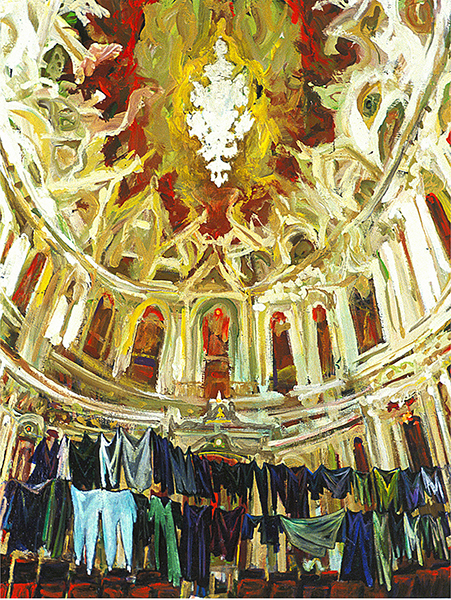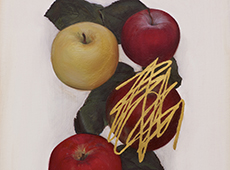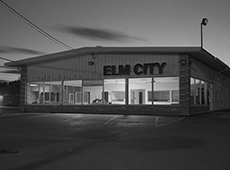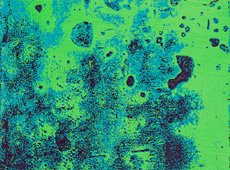The more art I see—and I think in 41 years in the art environment in New York I have seen quite a bit of art—enigma is that aspect of an artist’s work that holds me the longest and the thing that separates one artist from the rest. But enigma does not necessarily make you very appealing to curators…

© Arnold Mesches. Image courtesy of the artist and Life on Mars Gallery.
All the new thinking seems to resemble the old, or maybe not. I’m talking here about painting and how Raphael Rubinstein, in 2009, got us thinking about provisionality, and how, two years later, Sharon Butler broke the news about what’s casual and irresolute. Here’s Butler:
“The casualists use earlier abstract styles and motifs intuitively as a visual language rather than as a conceptual premise. Plenty of artists believe in the premeditated strategic employment of references to historic abstraction, but the paintings I’m discussing are more likely to emerge unplanned through the process of painting – not through the focused exploration of a front-loaded conceptual proposition.”
And more to the point:
“These self-amused but not unserious painters have abandoned the rigorously structured propositions and serial strategies of previous generations in favor of playful, unpredictable encounters.”(click.)
Now painter Michael David wants us to think twice, especially about the rigor part. He’s brought together painters Todd Bienvenu, Katherine Bradford, Jim Herbert, Arnold Mesches and Karen Schwartz in a tightly-focused show he calls “Painting Impossible,” a riff on Rubinstein’s central idea of provisionality. David:
“If you’re referring to New Casualism, Provisional Painting and New Mannerism, perhaps some of the differences (there are many commonalities)…are that Bienvenu, Bradford, Herbert, Mesches and Schwartz immerse themselves in the process of painting in a more physically aggressive way, combining a greater focus on the intentionality of drawing, gestural handling and the use of figuration.
We’ll be talking with David and some of the artists featured in the show, going deep into the ideas of process and material matter. Here’s a forshpeis. —(R.B.)
Rhythm is the visual record of transformation.
Rhythm in painting is evidenced by touch, mark making, macro and micro adjustments that painters create and leave as a record of their process of trying to find some moment of “truth” for themselves. It may manifest in many ways; speed, deliberation, gesture, subsumed gesture, violence, tenderness and intimacy, all of it.
The degree to which the painter is transformed by their process is the degree by which the viewer can be transformed by, or enabled to “enter,” the painting. It’s not a finite record or exchange, but in the face of that genuine and meaningful articulation of transformation, the viewer does feel it, does “know it.” The further the painter lets go of everything before they pull it back together the more expansive the experience; and the more acceptance there is of the concept that we are part of something larger than ourselves that can be known, but not fully understood.
Painting Impossible is on view at Life on Mars Gallery, Bushwick, through 22 December.
Later this week: More from Michael David; new from Katherine Bradford.
Subscribe to Tilted Arc
If you like this story, please consider subscribing. We are sticklers for privacy.
We will never sell or share your e-mail address.



